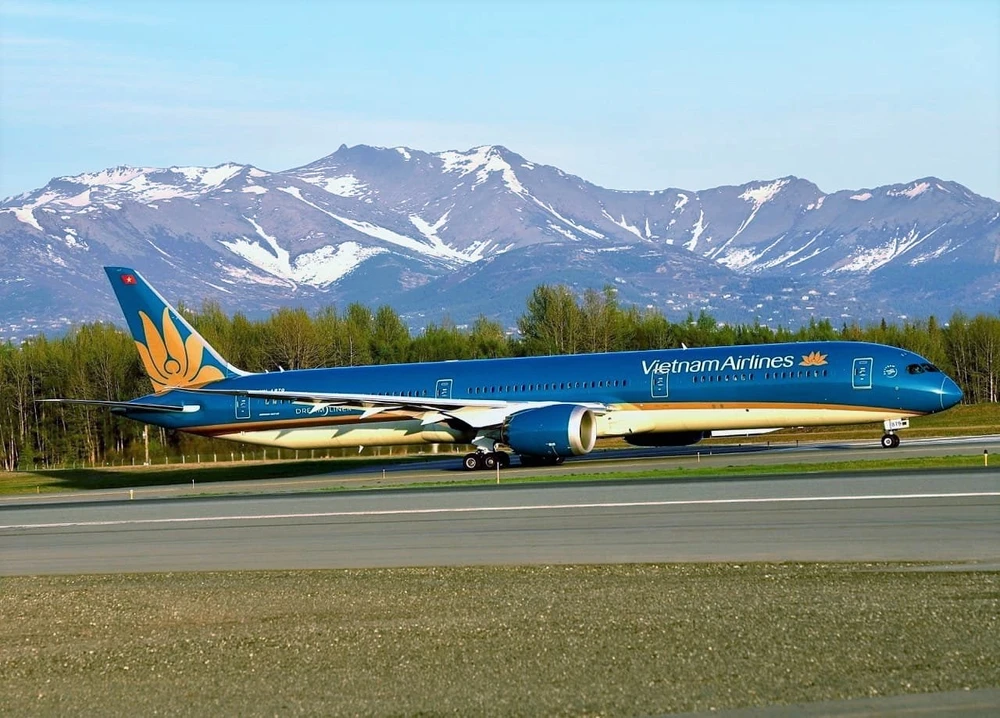
Cargo service providers will also make big gains as the number of flights increase again. Other businesses that will make remarkable recovery are ground service providers, air catering services, inflight services, and air transport companies.
Hard days over
The year 2021 is being seen as the most horrible year in the history of the aviation industry. The negative effects of the Covid-19 pandemic were clearly reflected in the dramatically reduced numbers of airline passengers in June 2021 when there were only 517,000 passengers during the entire month. The number was even lower than the previous month with 563,700 passengers. International passenger transport was in an even more difficult situation with only 105,000 passengers in a month, falling by a disastrous 96.5%.
By mid-February this year, fully vaccinated Vietnamese people made up about 73.9% of the population, with 19 year olds and older fully vaccinated people accounting for 69%. This shows that all the people meeting the requirements have now been fully vaccinated, not only in big cities but also in villages of provinces. Based on the vaccination coverage around the country, the Vietnamese Government has gradually relaxed on restrictions. All the domestic flights were resumed in late December 2021, and international flights are expected to resume again after the Government restored international flights from 15 February 2022, and opened all tourism services on 15 March as well.
While Covid-19 cases are still surging, the relaxation of the air transport restriction measures indicate that the Government is gradually adapting well to the new normal. With the Omicron variant showing no more danger than previous variants, analysts believe that the hardest period of the air transport services is finally over.
Cheap flights
Analysts at Bao Viet Securities Company (BVSC) forecast that the total number of domestic passengers in 2022 are estimated to reach 30 million, an increase of 89.9% compared to 2021 and 71% compared to 2020. However, the number of international visitors are predicted to be around five million, up by 4.661% compared to 2021 and 34.4% compared to 2020. This recovery, however, does not create an evenly spread advantage for all the transportation segments. In a normal state, the international market generally accounts for a large proportion of the total revenue of companies in the aviation industry.
For instance, Vietnam Airlines Corporation earns 65% of its revenue from the international market, while the figure at VietJet Aviation Joint Stock Company (VJC) is more than 50%. Not only air carriers, but airports and service providers also have a similar revenue structure. Before the outbreak of the Covid-19 pandemic, the two countries with the largest number of visitors to Vietnam were China and the Republic of Korea, accounting for 56% of the total number of international visitors to Vietnam in 2019. These two countries have very high vaccination rates. However, China's reopening plan is uncertain because it is pursuing a Zero Covid policy, which will make it impossible for the international market to see as much growth as expected.
In the short run, the industry hopes for a quick recovery in the domestic market. A study by CDB Aviation shows that the airlines that will make a significant post-pandemic recovery are low-cost carriers with young fleets that are fuel efficient, and hold dominant positions in domestic and short-distance international markets. Additionally, the immeasurable impact of the pandemic on people from most walks of life is expected to cause an increase in the number of tourists who would prefer to choose low and ultra-low fare airlines. This segment is predicted to recover and grow faster.
Fleet expansion
BVSC says that VJC, with its low-fare services, did not only cut costs more easily than HVN and other airlines, but also had a healthy debt-to-assets ratio at 0.66: 0.76 for most of the peak of the pandemic due to the lease of most of its assets. This created room for VJC to increase its credit capacity to successfully finance its fleet expansion when international routes were resumed. VJC planned to receive eight aircraft in 2021, 11 in 2022, and 25 aircraft in 2023. Therefore, VJC can catch up with the recovery in the aviation industry in the post-pandemic period.
HVN had to raise an additional capital of VND 8,000 bn to avoid negative equity, but its total liabilities still account for 98% of its total assets. This will hinder an expansion of its fleets when the pandemic is under control. Moreover, HVN is also trying to sell 11 of its aircraft due to financial difficulties. Although this may enable it to solve some big problems in the short term, a reduced fleet size will create certain adverse effects on its long-term operational capacity, and indirectly affect its potential for significant recovery and growth.
Even though the recovery speed may vary, experts say that this is absolutely the right time to accumulate stocks of airlines with great resilience. Furthermore, businesses need to have a sufficiently secure financial structure to prevent risk of unsuccessful business activities when flights are resumed, which could slow down the recovery speed. Experts believe that cargo service businesses will benefit the most when the frequency of flights increase. The next businesses to benefit from the economic recovery will be providers of ground services, air catering services and inflight services, as well as air transport companies.




















